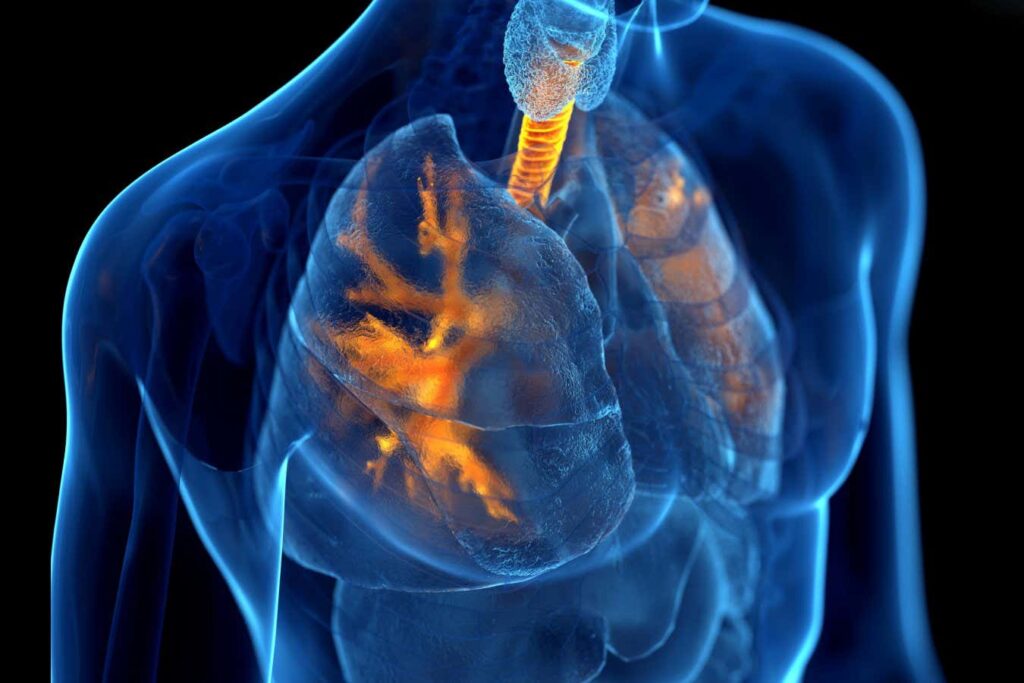Chronic obstructive pulmonary disease affects the lungs
SEBASTIAN KAULITZKI/SCIENCE PHOTO LIBRARY
Delivering medication to the lungs with inhalable nanoparticles may help treat chronic obstructive pulmonary disease (COPD). In mice with signs of the condition, the treatment improved lung function and reduced inflammation.
COPD causes the lungs’ airways to become progressively narrower and more rigid, obstructing airflow and preventing the clearance of mucus. As a result, mucus accumulates in the lungs, attracting bacterial pathogens that further exacerbate the disease.
This thick mucus layer also traps medications, making it challenging to treat infections. So, Junliang Zhu at Soochow University in China and his colleagues developed inhalable nanoparticles capable of penetrating mucus to deliver medicine deep within the lungs.
The researchers constructed the hollow nanoparticles from porous silica, which they filled with an antibiotic called ceftazidime. A shell of negatively charged compounds surrounding the nanoparticles blocked off pores, preventing antibiotic leakage. This negative charge also helps the nanoparticles penetrate mucus. Then, the slight acidity of the mucus transforms the shells’ charge from negative to positive, opening up pores and releasing the medication.
The researchers used an inhalable spray containing the nanoparticles to treat a bacterial lung infection in six mice with signs of COPD. An equal number of animals received only the antibiotic.
On average, mice treated with the nanoparticles had about 98 per cent less pathogenic bacteria inside their lungs than those given just the antibiotic. They also had fewer inflammatory molecules in their lungs and lower carbon dioxide in their blood, indicating better lung function.
These findings suggest the nanoparticles could improve drug delivery in people with COPD or other lung conditions like cystic fibrosis where thick mucus makes it difficult to treat infections, says Vincent Rotello at the University of Massachusetts Amherst, who wasn’t involved in the study. However, it is unclear if these nanoparticles are cleared by lungs. “If you have a delivery system that builds up over time, that would be problematic,” he says.
Topics:


